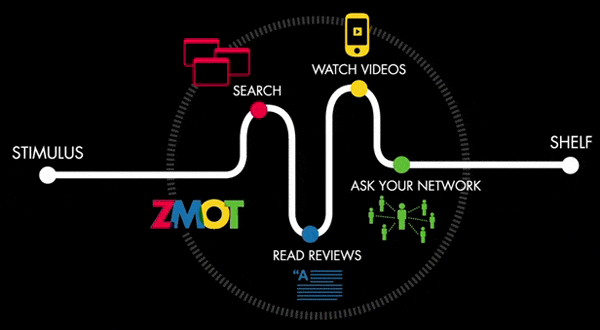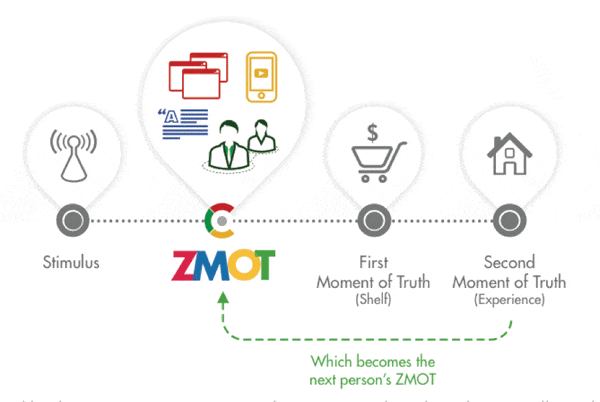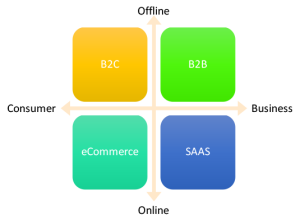 How can you improve the odds that customers choose your product or service over the competition? At one time, it may have been enough to create great advertising, make sure your product is available in the right distribution channels, build a great online presence, and provide customers with a great initial experience with your product or service. But today, as Google points out in their under-promoted Zero Moment of Truth campaign, you must go a step further: you must ensure that as customers research alternatives, your product or service stands out clearly as the best choice.
How can you improve the odds that customers choose your product or service over the competition? At one time, it may have been enough to create great advertising, make sure your product is available in the right distribution channels, build a great online presence, and provide customers with a great initial experience with your product or service. But today, as Google points out in their under-promoted Zero Moment of Truth campaign, you must go a step further: you must ensure that as customers research alternatives, your product or service stands out clearly as the best choice.
Background
In 2005, Procter & Gamble appointed Dina Howell to the newly created position of Director of the First Moment of Truth. P&G had determined that the 3-7 seconds before a shopper chose an item from the store shelf were absolutely critical to determining which product they purchased, and they wanted to make sure they had someone focused on the factors that influenced this First Moment of Truth. As their CEO at the time, A.G. Lafley put it:
The best brands consistently win two moments of truth. The first moment occurs at the store shelf, when a consumer decides whether to buy one brand or another. The second occurs at home, when she uses the brand — and is delighted, or isn’t.
Visually, it looks like this:
Although not shown in the diagram, there is an implicit feedback loop, where the Second Moment of Truth influences repeat purchases.
Although this concept originally applied to offline retail purchases, I think it can be extended to any purchase:
- A customer on Amazon.com searches for HDTV and is presented with a list of choices. The image of one TV is a non-descript black rectangle with the brand’s logo in a barely readable typefont; the second image shows a tiger literally leaping off the screen. Which image do you think tends to draw the click?
- A customer searching for financial services first encounters your brand by coming to the homepage of your site; what kind of experience do they have, especially compared to the competition?
Zero Moment of Truth
Google has identified a new moment of truth, the Zero Moment of Truth (ZMOT), in which the consumer researches the product or service before they come to the store or visit the point-of-purchase website. It probably won’t surprise you that 84% of shoppers research a purchase online before they make a purchase, whether online or offline. And they don’t just do cursory research. Google’s data showed that “the average shopper used 10.4 sources of information to make a decision in 2011, up from 5.3 sources in 2010.”
The new model looks like this:
Here, the feedback loop is made explicit.
Winning the Zero Moment of Truth in Software and Services
The impact of the Zero Moment of Truth varies by product and by industry. I can’t begin to draw out the implications for consumer product goods or large appliance purchases, for example. If you want to know more about these product areas, read Google’s excellent E-Book.
But for software and services, here are three keys to winning the Zero Moment of Truth:
Get Found
The Internet has an infinite number of shelves, but if the consumer can’t find you on the shelf where they’re looking, you can’t possibly win the Zero Moment of Truth. Sure, this is about search engine optimization (SEO) and Search Engine Marketing (SEM), but it’s also about understanding the questions that users ask when they’re researching your product or service.
Everyone in your industry is trying to secure the 1st or 2nd organic search ranking for your product category. While that’s important, what about the customers who either don’t know your product category or search based on their problem, not on your category?
Here are some concrete steps you can take to improve your chances of being found when prospects are researching your product category:
- Research related keywords. You can do this in several ways. Start typing your product category into a search engine box, and notice the auto fill terms that appear as you type. Both Google and Bing also have a function to the left of their main search results to show related searches. You can also use Google and Bing’s keyword research tools as well.
- Research how people find you today. Google Analytics, among other tools, can tell you the top keywords that bring traffic to your web site today. When looking at this data, it’s important to ask two questions 1) which keywords are people using to find you that are unexpected? 2) Which keywords are “missing”, i.e. you were expecting that people would use to find you, but they aren’t.
- What questions do people ask where you have the answer? In their E-Book on ZMOT, Google tells a story about President Obama’s staff using this technique. They had determined that the #1 searched question during the health care debate was “What’s in the health care bill?” They then wrote a blog post with that question, exactly as written, as the title, and soon, they were the number one organic search result for that question in the major search engines. Brainstorm questions that your prospects may have, and then determine from Google’s traffic estimator which queries get the most traffic. Write content that addresses these questions, and promote it.
Thought Leadership
When selecting a software product, particularly in business-to-business transactions, prospects will typically do some research before contacting vendors in order to whittle down the number of candidates. If you are eliminated during this phase, obviously you have no chance of winning the business. How do you make sure that you are chosen to participate in a high percentage of the evaluations?
In addition to getting found (covered above), prospects often choose vendors who they perceive to be thought leaders in their field. No one wants to choose the fading star – someone who has high market share today, but through poor customer service or old technology, is losing customers to more agile competitors.
What are you doing to establish thought leadership? Are your blog posts informative and innovative? Do you have a successful analyst relations program? Are your executives invited to speak at key conferences in your industry?
Reputation Management
When customers research during the Zero Moment of Truth, one of the things they are looking for are recommendations, for or against. All companies today need to have a real-time response team tasked with responding to complaints or negative reviews.
Even worse than negative reviews online are no reviews. This is particularly true, for example, in products sold through the Apple or Google Android app stores. Don’t be afraid of negative comments or reviews; these are a chance for you to engage with someone, and potentially turn them around.
Insight or irrelevant?
What do you think? How does the Zero Moment of Truth apply to your business? Does it? What say ye?




